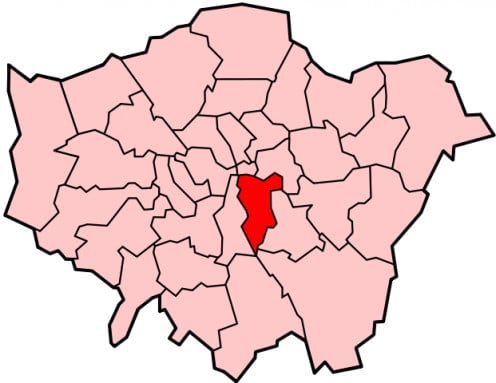- HubPages»
- Travel and Places»
- Visiting Europe»
- United Kingdom»
- England
Visiting Southwark Cathedral, London: Gothic and Neo-Gothic Structure Dating From the 12th to the 19th Centuries


Close to the Thames, with striking Medieval architecture
[NB: Among the many notable buildings which are the subject of these hubpages, these may include religious buildings, described as churches, etc.; these descriptions centre on the buildings' architectural and historical interest. This visit occurred some years ago.]
The original building on the site of what is now Southwark Cathedral seems to have dated from at least 1086, when mention of it is made in the Doomsday Book. In 1106 it was refounded as a priory under the Augustinian Order.
The strongly Gothic features of the building date from between 1220 (1) and 1420, although Neo-Gothic restoration was carried out in the 19th century, particularly to the nave. Architects who worked on the building in the 19th century included George Gwilt the Younger (1775-1856) and Sir Arthur Blomfield (1829-1899)(2).
Being of Gothic stylistic inspiration, the building exhibits in profusion pointed window arches, pinnacles and flying buttresses.
Among the historical ecclesiastical personalities associated with the Cathedral have been Bishop Lancelot Andrewes, one of the Authorised Version of the Bible's translators, who is buried here.
The building's Cathedral status dates from 1905. Interestingly, although very close to central London, the building, being south of the Thames, was historically linked with the dioceses of Rothester and Winchester. In civic administration today Southwark is a London Borough.
The Cathedral is situated within a short walking distance of the Thames, and is also a very familiar sight to large numbers of rail commuters, given its close proximity to London Bridge Station.
The Cathedral is regularly hired as a venue for many events which are not connected with a religious function; I have included, below, a photo of a graduation ceremony held at the Cathedral by King's College London Dental Institute. These include some ceremonies of London South Bank University, also located nearby in the London Borough of Southwark.
May 15, 2020
Notes
(1) The work in 1220 seems to have been precipitated by a fire which caused significant damage in 1212.
(2) Architect Sir Arthur Blomfield was a prolific designer of buildings — particular of ecclesiatical buildings — but he is probably best known for his designs for Selwyn College, Cambridge and the Royal School of Music, London.
Some sourcing: Wikipedia

Also worth seeing
The Southbank Centre (distance 1.6 miles / 2.5 kilometres) is comprised by the Royal Festival Hall, the Hayward Gallery, the Purcell Room and the National Poetry Library.
Imperial War Museums, Lambeth Road, Southwark site (distance: 1.4 miles / 2.3 kilometres), a leading world historical resource on the history of warfare.
Tate Modern, Bankside (distance: 0.8 miles / 1.3 kilometres), Great Britain's national gallery of international modern art.
At Elephant and Caslte (distance: 1 mile / 1.6 kilometres) may be seen: the 'Elephant and Castle' statue at the Underground Station of the same name, (a corruption of 'Infanta of Castille', the name of a licensed establishment popular with veterans of the Peninsular War); the 1861 Neoclassical-style Metropolitan (Spurgeon's) Tabernacle, by W. W. Pocock, was the ministerial base of C. H. Spurgeon, whose published writings and hymns are still read and sung worldwide; at London South Bank University is the Borough Gallery of art at 103 Borough Road.
Central London has such huge numbers of visitor attractions that I will refer to only a small fraction of the principal ones; these include: Trafalgar Square; the Houses of Parliament at the Palace of Westminster; Westminster Abbey (where Queen Elizabeth II was crowned and where Prince William and Kate Middleton were married); St. Paul's Cathedral; the Royal Albert Hall; and so many others.
...
How to get there
United Airlines flies from New York Newark Airport to London Heathrow Airport, where car rental is available. Underground and train services link Heathrow Airport with Central London. London Bridge Station links to Charing Cross and Cannon Street in Central London, and serves Gatwick Airport and Luton Airport, and many destinations in the South East. London Bridge Underground Station is on the Jubilee and Northern lines. Please note that some facilities may be withdrawn, without notice. Please check with the airline or your travel agent for up to date information.
MJFenn is an independent travel writer based in Ontario, Canada

Other of my hubpages may be of interest
- Visiting London South Bank University, Elephant and Castle, London, England: A Well Established Seat
In England's London Borough of Southwark is London South Bank University, a now mature seat of learning with its origins in the 19th century; a short travelling distance from its site at Elephant and Castle are various cultural and architectural visi - Visiting the 1861 Metropolitan (Spurgeon's) Tabernacle, Elephant and Castle, London, England: By Wil
The Metropolitan (Spurgeon's) Tabernace at Elephant and Castle, London, England, was designed in Neoclassical style by William W. Pocock, and completed in 1861. Four towers which were part of Architect Pocock's original design, were never built. The








